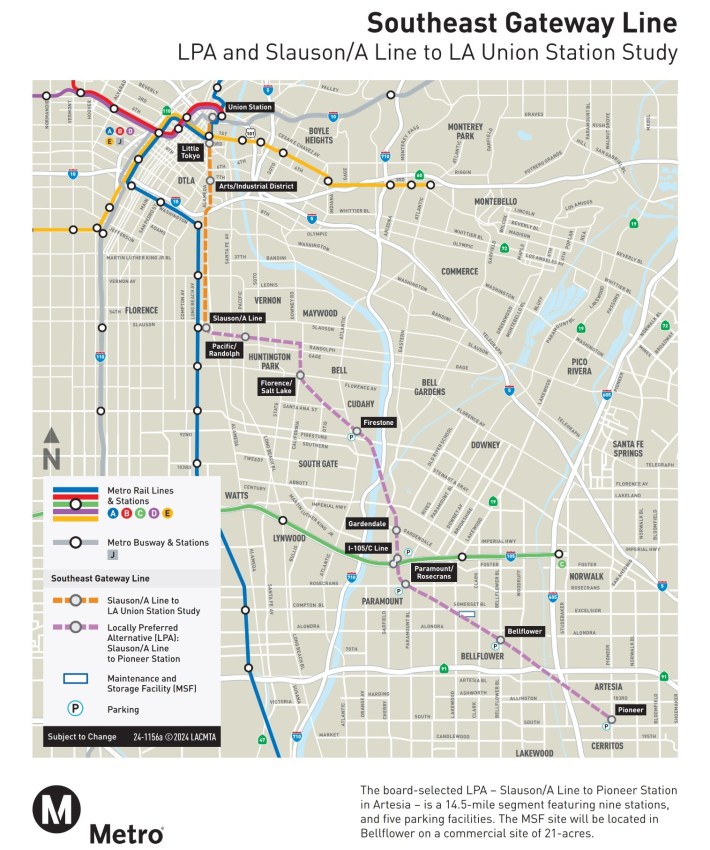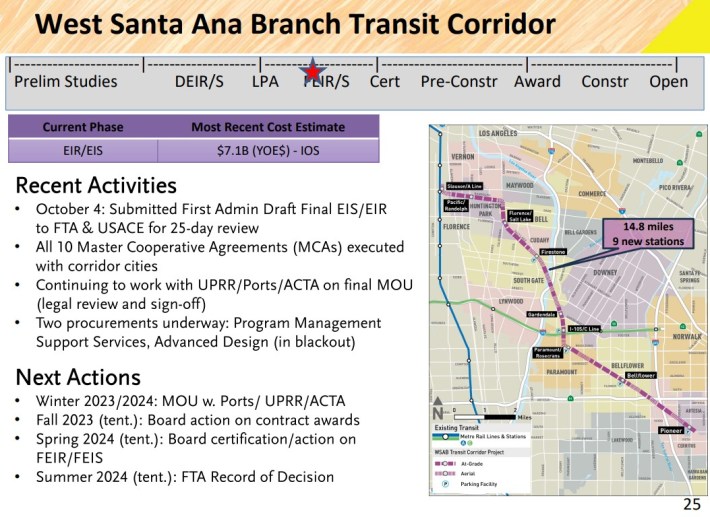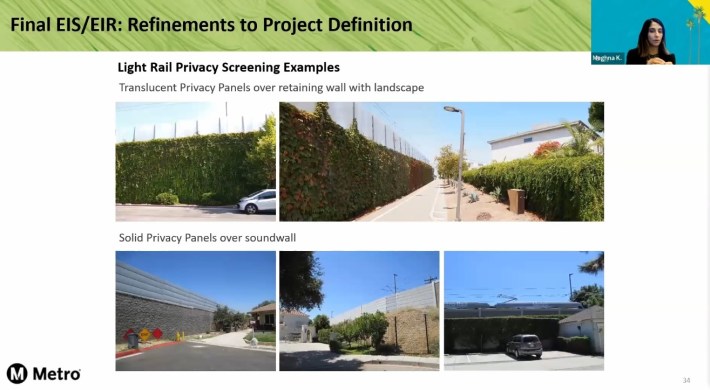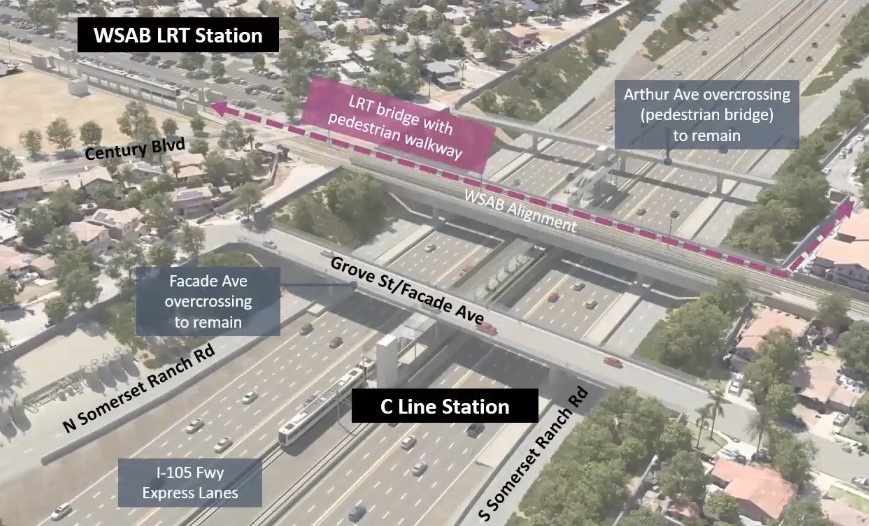Last week, Metro released its final environmental studies for its planned Southeast Gateway Line light rail.
The Southeast Gateway Line is currently planned to extend 19 miles from the city of Artesia into downtown Los Angeles Union Station, serving Bell, Bellflower, Cerritos, Cudahy, Downey, Florence-Firestone, Huntington Park, Paramount, South Gate, and Vernon. The project was recently renamed to reflect the Southeast L.A. County area it will serve, and not just the historic name (West Santa Ana Branch) of the rail right-of-way where much of the project is located.

In 2022, Metro decided to initially build just the lower 15-mile section from the Slauson A Line Station to Artesia.

With quite a few aerial sections and a new connection to the C (Green) Line in middle of the 105 Freeway, this is a pretty expensive rail project. Just the initial lower section is expected to cost around $7.1 billion, which is up from a 2022 estimate of $4.9 billion.
Metro has roughly $2 billion for the line (mainly sales tax revenue) and must seek additional funds from the federal government. The timeline depends on funding; optimistically, construction might get underway around 2025-6, with an opening around 2035.
There are minor changes in the new environmental documents (a Final Environmental Impact Statement/Environmental Impact Report - EIS/EIR) released this month, compared to the draft EIS/EIR released in 2021.
Many of the latest changes appear to be minor steps in the wrong direction. These are probably acceptable trade-offs to get the project from plan to construction with conflict with local cities and other stakeholders - though they end up getting a little less rail mobility for a slightly higher cost.
Several recent changes include [view full listing in Appendix E]:
- New C Line station will be less accessible. The city of Paramount requested that the new C Line Station (at the 105 Freeway) have one entrance instead of two. So, Metro will allow access only via the Arthur Avenue pedestrian bridge, but will still build the Façade Avenue entry point (for emergency access and potential future access). This change will mean riders living west of the new station would have to walk/bike an extra tenth of a mile.
- Some low-volume streets proposed to be closed would instead be at-grade crossings, including 187th Street in the city of Artesia. (Similar changes elsewhere on the line appear to be a wash, with as many closings as openings.)
- Some measures add cost, without providing Metro rider utility. At the request of adjacent residents, Metro will add more and higher sound walls, landscaped panels, plus other measures to visually and audibly shield neighboring sites. Additionally, some changes to bridge/aerial structure designs appear to add minor costs. (A few design exemptions likely allow Metro to save money by modifying existing bridges instead of replacing them.)

It's a bit disappointing to see Metro agreeing to small changes mostly to accommodate driving convenience without benefiting Metro transit riders (for this and other new Metro lines). But none of the current changes appear to be big negatives, so perhaps Metro did its best to fend off more significant adjustments.
Find links to Metro Southeast Gateway Line EIS/EIR documents at The Source's post. Submit comments to sgl@metro.net by Monday, April 29. Metro expects its board to certify the final EIS/EIR this Spring.







